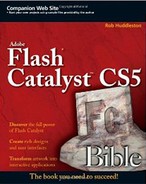Science-fiction author Arthur C. Clarke once wrote, "Any sufficiently advanced technology is indistinguishable from magic." Surely nothing quite fits that bill as well as the Web, which will mark its 20th anniversary in 2010. It can be difficult to think of any other invention throughout history that has changed the way in which we think, communicate, and learn as quickly as has the Web.
When I was in college in the early 1990s, I was one of the few students in my residence hall with a personal computer, and I had to apply to be one of the lucky few who had his computer connected to the university's network. I can clearly recall struggling through learning the archaic command system to send even simple e-mails. Today, my seven-year-old daughter is as comfortable on a computer as is her mother, and if not for her father's insistence on taking a picture to commemorate the event, would never remember sending her first e-mail to ask a family friend a survey question for a homework assignment.
My first introduction to Flash came when I was an instructor at New Horizons Computer Learning Center in Sacramento. I had been asked to learn it so that I could eventually start teaching it. That was Flash 4, and even then, it was pretty cool: I had never imagined that it could be so easy to draw a shape and get it to move across the screen.
At the time, however, I definitely considered myself more of a designer. ActionScript, even in its fairly primitive 1.0 incarnation in Flash 4, was something to be feared and avoided if possible.
Several years later, when Macromedia first coined the term Rich Internet Application and began talking about moving Flash beyond animation and annoying banner ads and into the world of full-featured application development, I was comfortable enough with ActionScript and the ideas behind it that I was no longer intimidated. However, like almost everyone else who made a stab at working with those early Flash applications, I was sorely disappointed by how difficult it was to create them in Flash. Surely there had to be an easier way?
Macromedia realized that they had now effectively split the Flash community in two:
The designers on the one side continued to want to use the tool as it had been originally intended and wanted to continue to create artwork and animation.
The developers desired ever-better scripting tools and ever-easier development environments.
To their credit, the folks at Macromedia realized fairly early on that one tool could never hope to satisfy both groups, and thus was born Flex: Flash for developers. Like most software platforms, Flex had some issues at first, but by the time Adobe released Flex 3, it was a mature application development platform.
Every year, Adobe hosts an annual developer's conference called MAX. At MAX 2007, held in Chicago, Adobe first showed the world an exciting new tool, at the time code named Thermo. I wasn't able to attend MAX that year, but I can clearly remember the almost-immediate buzz online about Thermo. Like many others, I watched, over and over, shaking videos taken from the audience of this cool new tool that would forever revolutionize the way Flex applications were designed.
It's amazing, looking back over the two years since I first saw those quick glances of Thermo, how far it has come. Now officially rebranded as Adobe Flash Catalyst CS5, the greater Flex community can at last get their hands on it. I hope that everyone enjoys using it as much as I have.
Adobe sells almost all of their products these days as a part of a suite, and they like to stress how the programs work together. While products like Dreamweaver and Flash Professional may work better when used in conjunction with other programs, Catalyst is unique in that it really cannot be used alone.
Your project designs need to be created in another application (such as Illustrator or Photoshop), and the project needs to be finished somewhere else as well (such as Flash Builder). Therefore, while this book seeks to be as complete a guide to Catalyst as is possible, you will likely find that you need to rely on other resources as well to fill out your knowledge of the other programs you'll be using.
The Adobe Illustrator CS5 Bible, Adobe Photoshop CS5 Bible, and Adobe Fireworks CS5 Bible are each excellent resources for those design tools. Likewise, the Flash Builder and Flex Bible will show you what you need to know to finish your project in Flash Builder.
